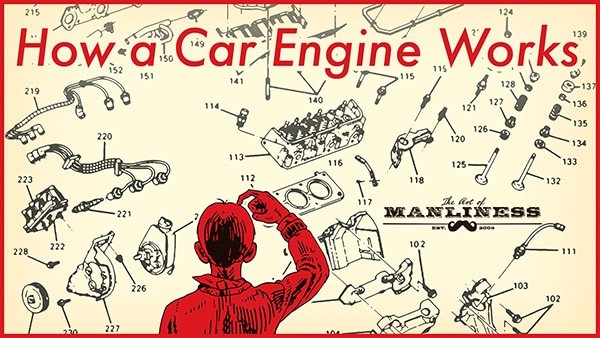For those unfamiliar with the intricacies of automobiles, the inner workings of a car engine can seem daunting. This guide provides a foundational understanding of car engines, perfect for beginners who want to learn more about how their vehicles operate.
Understanding the Internal Combustion Engine
The internal combustion engine (ICE) powers most cars on the road today. Its name derives from the process where fuel and air ignite inside the engine, generating the force needed to move the car. This contrasts with external combustion engines, like steam engines, where fuel burns outside the engine to create power.
The history of the ICE is surprisingly long, dating back to 16th-century experiments with gunpowder-fueled engines. While inefficient, these early attempts paved the way for the development of the four-stroke engine in 1860 by Belgian inventor Jean Joseph Etienne Lenoir. Later refined by Nicolaus August Otto, the four-stroke engine remains the fundamental design used in most cars today.
Key Components of a Car Engine
Before diving into the four-stroke process, let’s break down the essential parts of a car engine:
-
Engine Block (Cylinder Block): The foundation of the engine, typically made of aluminum alloy or iron. It houses the cylinders where pistons move. Engine configurations, such as V6 or V8, refer to the arrangement and number of cylinders.
-
Combustion Chamber: The space where fuel and air ignite, comprised of the cylinder, piston, and cylinder head.
-
Cylinder Head: The metal cover that sits atop the cylinders, containing intake and exhaust valves, spark plugs, and fuel injectors.
-
Piston: A cylindrical component that moves up and down within the cylinder, transferring energy to the crankshaft. Piston rings ensure a tight seal and prevent oil leakage.
-
Crankshaft: Converts the piston’s linear motion into rotational motion to power the wheels. It connects to the pistons via connecting rods.
-
Camshaft: Controls the timing of the intake and exhaust valves, ensuring optimal engine performance. It works in sync with the crankshaft via a timing belt or chain.
-
Valvetrain: The system that operates the valves, including valves, rocker arms, pushrods, and lifters.
-
Valves: Regulate the flow of fuel and air into the combustion chamber (intake valves) and exhaust gases out (exhaust valves).
-
Fuel Injectors: Deliver fuel into the cylinders or intake manifold for combustion. Modern cars utilize various fuel injection systems, including direct injection, port injection, and throttle body injection.
-
Spark Plug: Ignites the compressed fuel and air mixture, initiating the combustion process.
The Four-Stroke Cycle in Action
The four-stroke cycle is the heart of how an internal combustion engine works. It consists of four distinct stages:
-
Intake: The piston moves down, drawing a mixture of air and fuel into the cylinder through the intake valve.
-
Compression: The piston moves up, compressing the air and fuel mixture. This compression increases the efficiency of the combustion process.
-
Power: The spark plug ignites the compressed mixture, forcing the piston down and generating power.
-
Exhaust: The piston moves up again, pushing the exhaust gases out of the cylinder through the exhaust valve.
This cycle repeats continuously in each cylinder, generating the power to move the vehicle. Learning about these fundamental principles unlocks a deeper understanding of how your car functions.
For further learning, resources like “How Cars Work” by Tom Newton offer a comprehensive look into the mechanics of automobiles. This guide provides a starting point for exploring the fascinating world of car engines.

